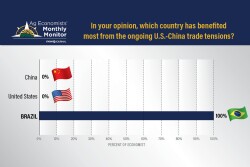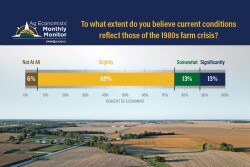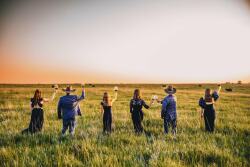Farm Economy
As farmers look ahead to 2026, grain markets are sending mixed signals based on record corn exports, large supplies, federal payments and ongoing China trade uncertainty.
Record corn exports are tightening stocks and lifting prices, but long-term strength depends on expanding domestic demand. Could year-round E15 overcome legislative hurdles in Washington and change the market trajectory?
Treasury Secretary Scott Bessent says China is making progress on its commitment to buy U.S. soybeans, hitting the “correct cadence,” with purchases expected to wrap by February 2026 — underscoring ongoing trade commitments and support for farmers.
The Dec. 1 sale in Sioux County not only sets a farmer-buyer record for Iowa, but according to Jim Rothermich, it highlights fierce demand for premium ground as lower-quality farms see more no sales.
Going into the final weeks of the year, many growers across the country are shouldering significant financial strain from land rent payments, rising input costs, and efforts to stay in business and viable until commodity prices improve.
USDA says anticipated trade aid could be announced the first week of December, but ag economists are split on whether payments would provide relief or worsen lingering risks such as high input costs and market distortions.
Reflecting a marked decline in expectations as margins tighten, ag lenders surveyed in mid-2025 report only around 52% of their farm-business borrowers will remain profitable this year.
Beijing’s refusal to buy American and its pivot to Brazil could be less about economics and more to do with politics. “It’s a calculated decision about control and national leverage, not about getting the cheapest beans,” says one ag economist.
Farm economists say today’s ag slowdown “isn’t a collapse, but it’s a grind.” From trade woes to rising costs and consolidation, experts warn recovery could take time, even as livestock markets stay strong.
Some row-crop growers are converting acres, banking on long-term opportunities with beef. Others are staying the course with crops but embracing ways to add some dollars to their bottom line in the short-term.










